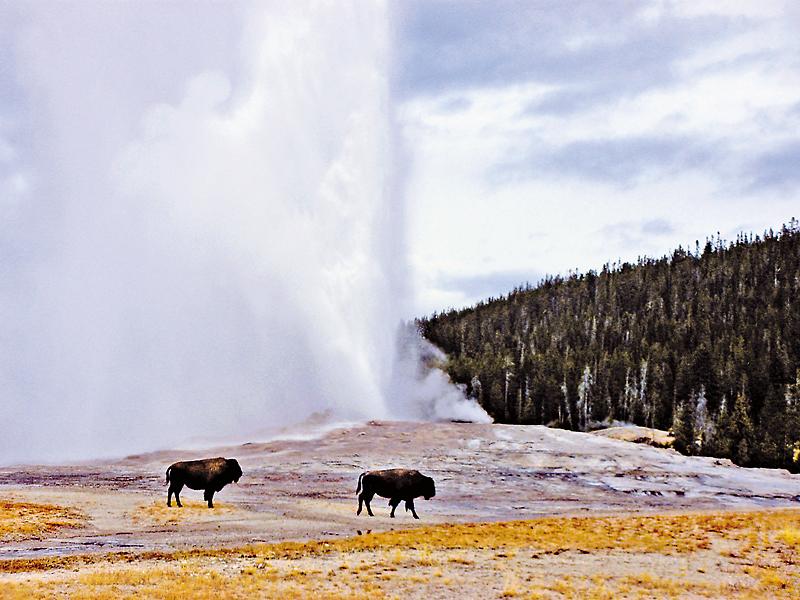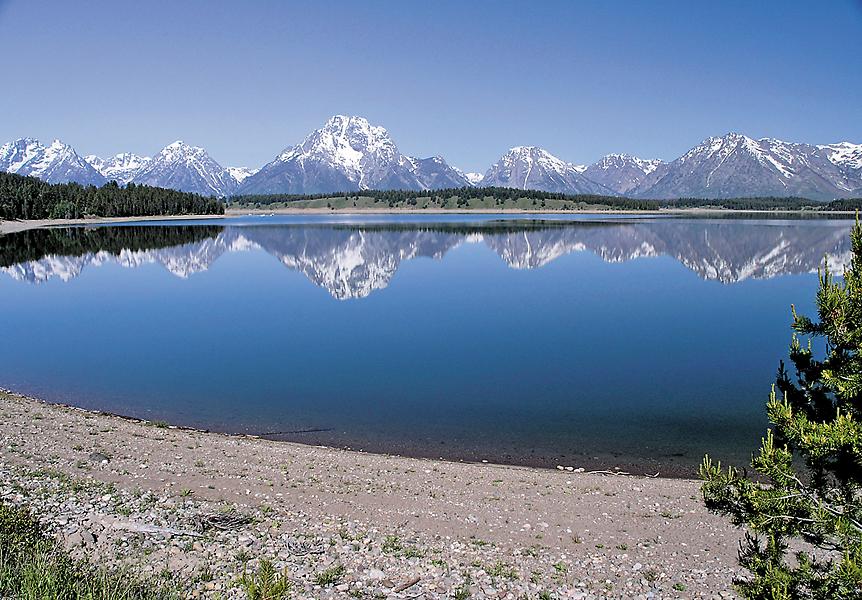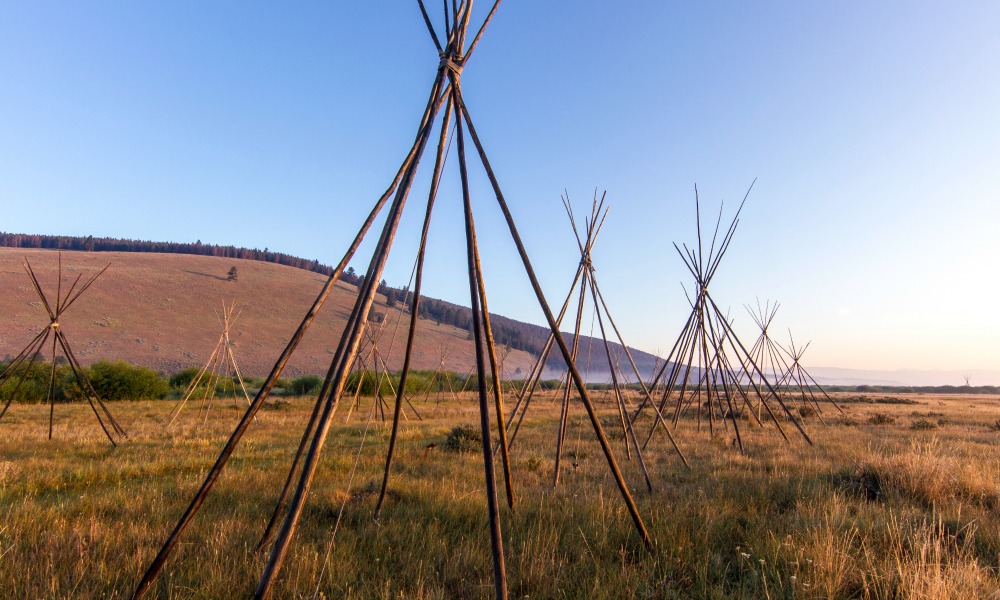 Travelers seeking solace in the wide open spaces of the American West will discover a wilderness Shangri-La in the Grand Teton and Yellowstone National Parks, the latter being America’s first national park, established in 1872.
Travelers seeking solace in the wide open spaces of the American West will discover a wilderness Shangri-La in the Grand Teton and Yellowstone National Parks, the latter being America’s first national park, established in 1872.
Along the byways and blue highways from Salt Lake City, Utah, to Jackson, Wyoming, from Old Faithful Lodge to Fort Bridger, you will marvel at the magnificence of the mountains and the meditative miles of windswept plains. During your 1,500-mile road trip, the high, wide and lonesome spaces of the Cowboy State will renew and revitalize your spirit from too much urban-techno living.
BLUE HIGHWAY HEAVEN
Leaving Salt Lake’s urban America behind in your rearview mirror is the first step in your pilgrimage of renewal to the vast wild lands of western Wyoming. In Evanston, stop at the restored Carnegie Library to pick up travel brochures from the Chamber of Commerce, then take a restful walk to the Depot Square. Be sure to visit the Joss House, a replica of a Chinese temple built by pioneer railway laborers.
The next 1,100 miles is blue highway heaven. You will meander north on the scenic switchback route of Route 16/U.S. 89 that hugs the border of three states as it climbs in elevation through Star Valley toward the national parks. Summertime along this grand stretch of blacktop is filled with rodeos, county fairs and festivals. Afton, one of the wonderful Western towns on your way to Jackson, welcomes visitors with the world’s largest elk antler archway and a perfect diner stop at the classic Elkhorn Family Restaurant.
For many, Jackson is the ultimate luxury destination, offering a downtown lined with classy restaurants, cowboy saloons and chic Western couture. Tucked between the boutiques are some of the West’s top gun and tackle shops, like Jack Dennis Outdoors. The chamber can provide you with a list of outfitters who can lead you on a fly-fishing or hunting trip of a lifetime. Summers offer horseback adventures at area resorts and ranches, while winters not only bring some of North America’s most spectacular skiing at Jackson Hole Ski Resort, but also lets your horse get in on the fun in an annual skijoring competition (Triple Creek Ranch also offers a friendly version for fun). For road warriors, the best Jackson Hole site may just be Mormon Row, a line of homestead complexes along the Jackson-Moran Road that illustrates Mormon settlement in the area.
SHANE’S TETON RANGE
OUR FIRST NATIONAL PARK
With more than three million visitors a year, you must plan your lodging or camping well in advance. Old Faithful Inn is the crown jewel, and its towering lobby fireplace has just been restored. Even if you cannot stay at the Old Faithful complex, tour the lodge (the ice cream is great!) and enjoy views of the Old Faithful Geyser. Two other lodges, the Mammoth Hot Springs Hotel & Cabins (1911) and the rustic Roosevelt Lodge & Cabins (1920), are both perfect alternatives to Old Faithful for travelers looking for park accommodations with a historic flavor.
As you tour the park, look for features named after the flight of the Nez Perce through Yellowstone during the Nez Perce War in 1877. Nez Perce Ford is the location where Chief Joseph crossed the Yellowstone River on August 25; other locales include Nez Perce Creek and Cowan Creek, named for tourist George F. Cowan, who was wounded by the Nez Perce near the mouth of the creek.
BUFFALO BILL COUNTRY
HIGH PLAINS DRIFTER TOUR
Next, head due south through the aptly named Wind River Canyon, past Boysen Reservoir, to the crossroads town of Shoshoni and the turnoff to Riverton. The Wind River Hotel & Casino, two miles south of Riverton, is managed and owned by the Northern Arapaho Tribe. The casino and hotel offers gaming, a good steak, a round of golf and affordable rooms all at one place less than a day’s drive from Cody and Yellowstone.
Leaving Riverton, your High Plains Drifter tour zigzags south by southwest first to Lander. Do not miss the Museum of the American West on Main Street. A living history center, the museum offers remarkable exhibitions on Plains Indians and central Wyoming pioneer history.
From Lander, cross Wyoming’s Great Divide Basin southeasterly on U.S. Highway 287 for two hours to reach the high plains town of Rawlins. In its early years as a blood bucket railroad town, Big Nose George Parrott sat in a Rawlins jail in 1881, awaiting his hanging; after a lynch mob strung him up, he was skinned. Some of his skin was made into a pair of shoes, which you can see on exhibit at the Carbon County Museum. The state’s first penitentiary, the Wyoming Frontier Prison, closed for business nearly 30 years ago, but the 1901 prison is open to visitors year-round, weather permitting.
Back on the interstate, paralleling the original rail route across Wyoming, the hardscrabble historic mining, rail and oil town of Rock Springs is home to the Rock Springs Historical Museum. The fully restored, 1894, native sandstone city hall houses an excellent local history collection and provides the visitor with a reflective view of the generations who have called Rock Springs home.
West of Rock Springs, sitting astride the Oregon Trail, is the humble crossroads of history called Fort Bridger, your last stop before returning to Salt Lake City. With partner Louis Vasquez, mountain man Jim Bridger built the fort and trading post in 1843. For decades, it served as a cornerstone, if not controversial, outpost of empire for Manifest Destiny. Walking the grounds of this state historic site, you will stride the paths of Pony Express riders, cavalry soldiers, Indian trading parties, Mormon pioneers, California gold seekers, Oregon pioneers and mountain men. The highlight of the summer is the Fort Bridger Rendezvous held annually the first weekend of September.
SHANGRI-LA FINALE
As you descend Interstate 80 down the grade through the Wasatch Mountains, with nearly 1,500 miles of the grandest, most mysterious and rugged Western wilderness behind you, the modern oasis of Salt Lake City awaits your arrival for one last night before your wilderness tour is complete. The Great Salt Lake shimmers in the distance, the desert lands stretch westward toward the Sierras and the Pacific Ocean, and your imagination readies itself for the next search of Shangri-La on America’s blue highways.
Photo Gallery
– Courtesy Park County Travel Council –
– By Jon Sullivan –
– Courtesy Grand Teton National Park –
– By Roger Peterson / USDA –
– True West Archives –
Stuart Rosebrook














